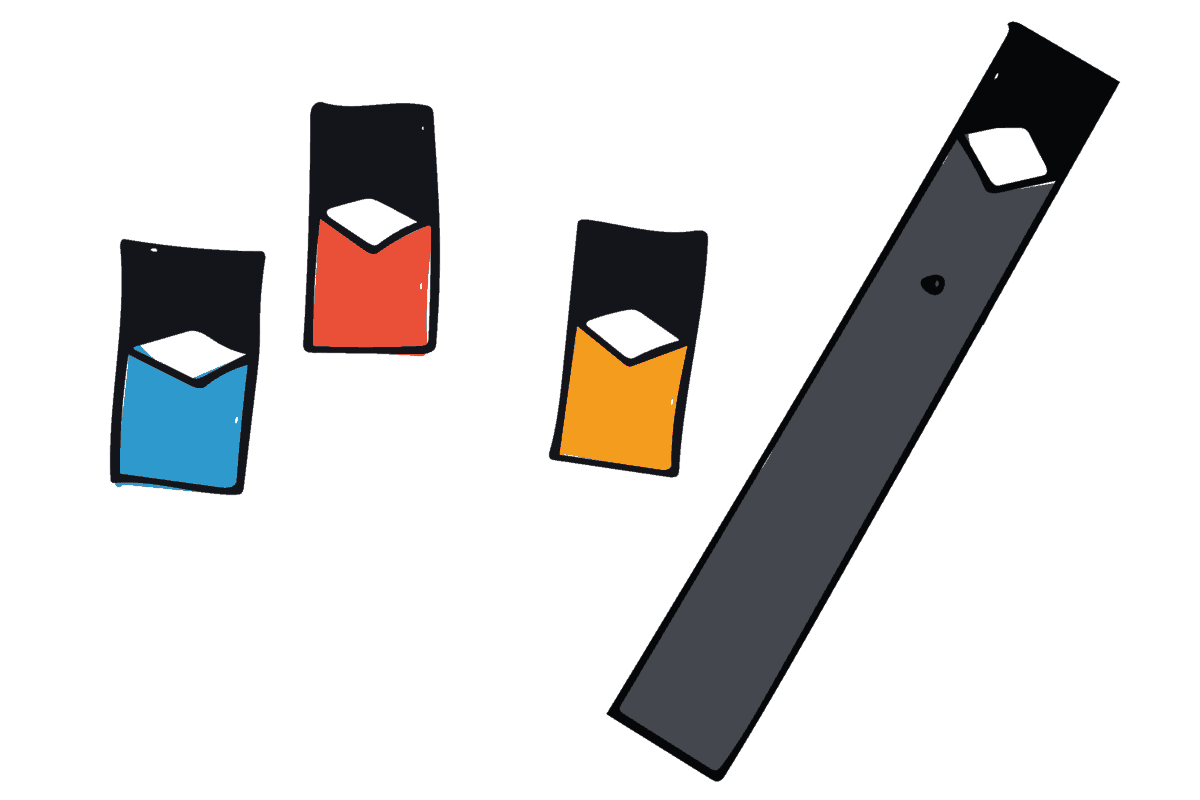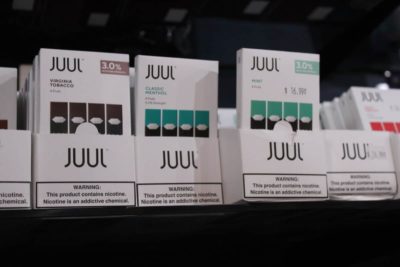Sets of flavored nicotine cartridges in tidy white packaging sit on the wall behind the counter in an unassuming vape shop. The four smooth letters on the label are as sleek as the product’s design. If you didn’t know any better, you’d think these little devices, called Juuls (pronounced like the word jewels), would house your important computer files. Instead, the USB-drive look-alikes pack a punch of 5 percent nicotine and fill your mouth with a puff of flavoring.
Dre, whose name has been changed for his anonymity, stands at the counter fielding customer requests as he has for the past four years at the shop. He responds to their “What’s up?” with a “Chill,” but his relaxed personality takes a back seat when I ask him more about Juul.
“I think it’s stupid,” he said flat out.
When customers first started asking for Juuls a little over a year ago, the shop wasn’t selling the products. Dre brushed it off, thinking it was another “come and go” fad. But when three or more people a day walked in asking for a Juul, Dre realized there was something more to his customers’ requests.
“It’s this high-tech thing,” he said. “It’s the cigarette of the future.”
Juul not only looks like a computer device, its magnetic USB charger snaps right in (see video above) and plugs into your laptop’s port. In case you need to know if it’s time for a charge, two taps of the device turn on LED lights to share the level of battery remaining. And if you’re at a party and you’ve got a Juul waving in your hand, the device knows, prompting its LED lights to flash in an array of colors.
David Pierce wrote of these functionalities in Wired when Juul was first released, saying of the lights, “That last one is completely pointless. But it’s fun.”
Through such design elements, the device can be easily concealed, and yet it is meant to be seen. This dichotomy has made Juul popular among one particular audience that has put the company in the news: middle and high school students. The Centers for Disease Control and Prevention (CDC) responded by releasing information on the health risks for young people vaping e-cigarettes, and the Food and Drug Administration (FDA) made headlines for its crackdown on Juul, calling out an “epidemic” of e-cig use among youth and announcing it is looking into Juul’s marketing practices to kids.
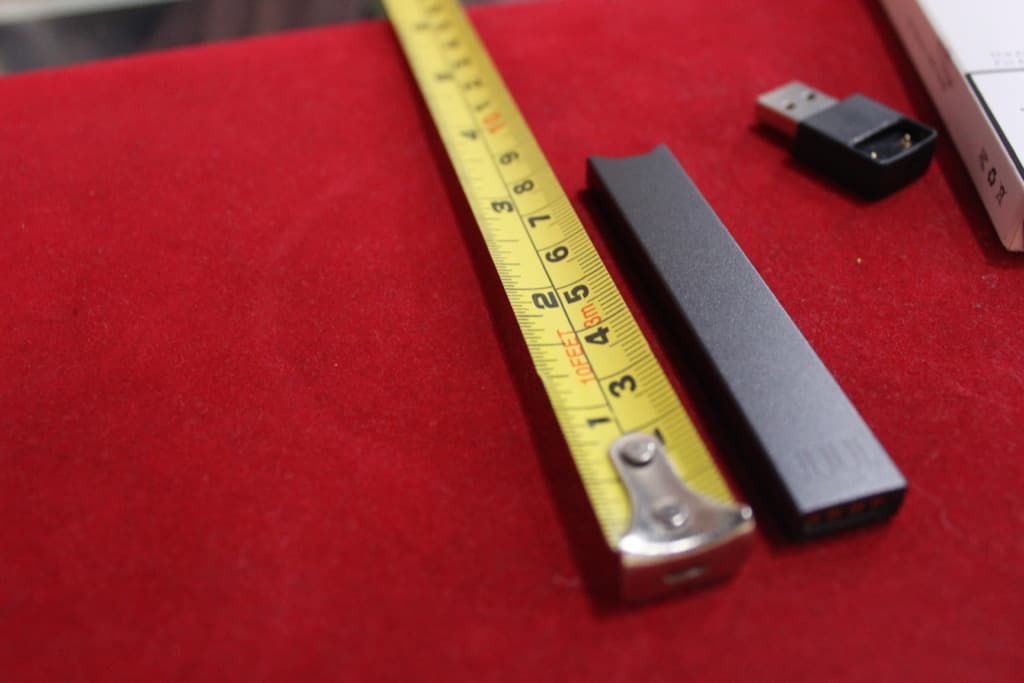

Last month, Juul Labs released a comprehensive action plan to curb use among youth. In the plan, Juul Labs CEO Kevin Burns stated, “We don’t want anyone who doesn’t smoke, or already use nicotine, to use JUUL products. We certainly don’t want youth using the product.”
And at the very opening of the action plan, Burns stated the mission of the company: “JUUL Labs is committed to improving the lives of the world’s one billion adult smokers, with the ultimate goal of eliminating cigarettes.”
A call for investigation into Juul’s marketing practices continues, including a civil investigative demand from Attorney General Josh Stein. (More on regulation in our series later this week.) But Juul’s marketing may be just part of the equation. As much as there is a hard science to creating the e-cigarette aerosol by heating a liquid, there is a social science at play in the vaping phenomenon seen in schools across the country today, with an estimated three million middle and high schoolers reporting e-cig use.
This social science certainly pans out in social media — outside of Juul accounts, which they have recently shut down. Verified Instagram accounts like that of vaustinl, a self-described “vape enthusiast,” have 2.6 million followers. Austin Lawrence notes his Instagram page is intended for a 21+ audience, with which he shares “vape tricks” using various devices. He posts videos and images of himself blowing out colored smoke configured in a multitude of shapes and even into oversized bubbles. And for his 23rd birthday, his mom got him a vape cake, highlighting that some parents don’t view vaping as negatively as other drugs (more on these public health views later this week).
What students see on social media gets pulled into classrooms and parties, recorded on Snapchat, and pushed back to social media again.
And then there’s that oft-repeated element present in all anti-drug campaigns: peer pressure.
In an opinion piece by the editorial board of Nighthawk News, a student-run paper in Kill Devil Hills, staffers wrote, “We are easily influenced, moldable. The trends catch on fast and spread like wildfire. What is popular one week will be nonexistent the next. We are constantly searching, greedy for the next attractive thing, something bigger and better than the last. And we wonder how Juuling came to be an epidemic?” (Read their full op-ed, published as a perspective with EdNC, here.)
Students get caught up in their friends vaping (maybe their parents even vape as they wean off cigarettes), in social media, and in being part of the next cool thing. But there’s one hook that can keep young people coming back like nothing else: nicotine.
Back in the vape shop, Dre shared his knowledge of vape products — he sells them after all. He showed me e-liquids more for “fill-your-own” tanks, usually holding about 12 mg to 18 mg of nicotine. Then he showed me nicotine salts, a bottle of which he says lasts longer than a Juul pod and has become more popular over the last six months. Nicotine salt bottles usually have about 25 mg of nicotine but can go up to 45 mg or 50 mg. At those higher levels, Dre said those products are basically meant to compete with a Juul pod.
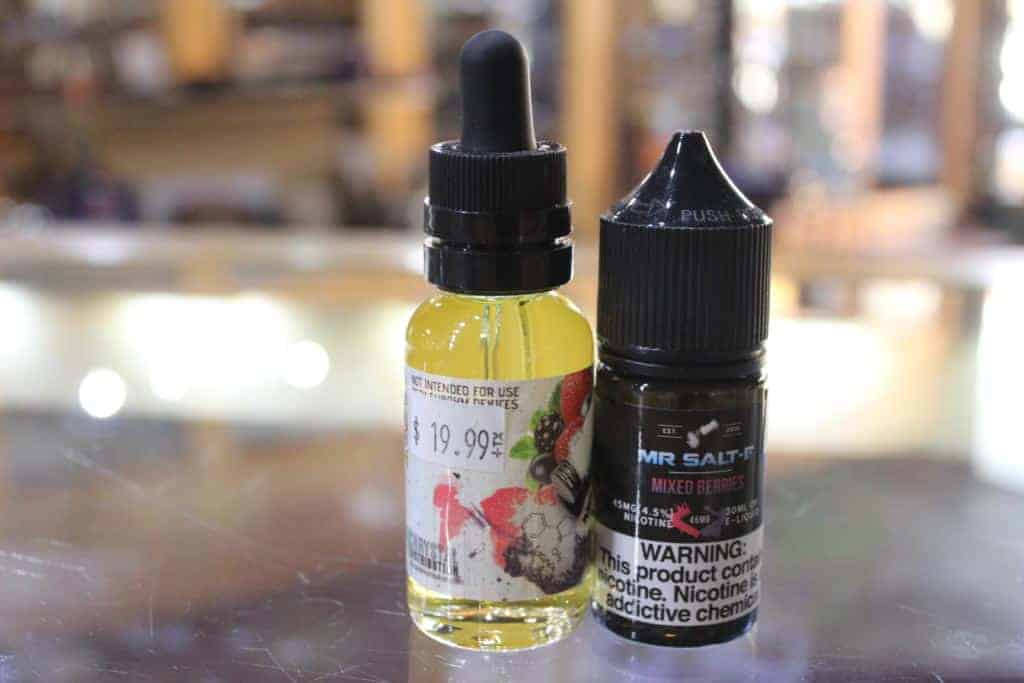

That’s because when Juul pods came on the market, they carried twice the amount of nicotine than other e-liquids, at 5 percent nicotine. It’s estimated that one Juul pod has roughly the same amount of nicotine as one pack of cigarettes. Dre said his co-workers also estimated that there are 200 puffs in one pod, landing each puff at around .25 mg of nicotine.
In comparison, one competitor, Blu, sells cartridges ranging from 1.6 to 2.4 percent nicotine. And there has been a backlash to these high levels of nicotine — to which Juul Labs responded by releasing a 3 percent nicotine option made widely available in October.
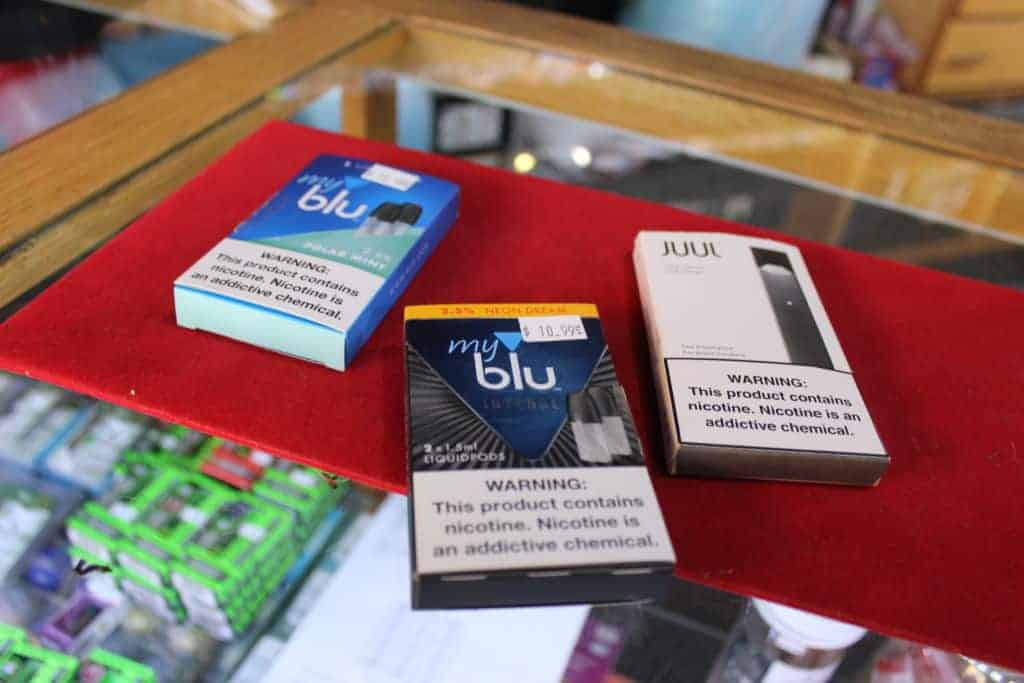

But as a vape shop employee, Dre remembers being taken aback by the levels of nicotine Juul came on the market with.
“My beef with it is … the idea is that you’re trying to not smoke cigarettes anymore,” he said. Smoking cessation, as Juul states in their mission, is their company’s goal.
“You’re doing the opposite when you get a Juul,” Dre said. “You’re just getting more [messed] up on nicotine.”
“At the end of the day,” he continued, “I thought that was what we were trying to prevent.”
